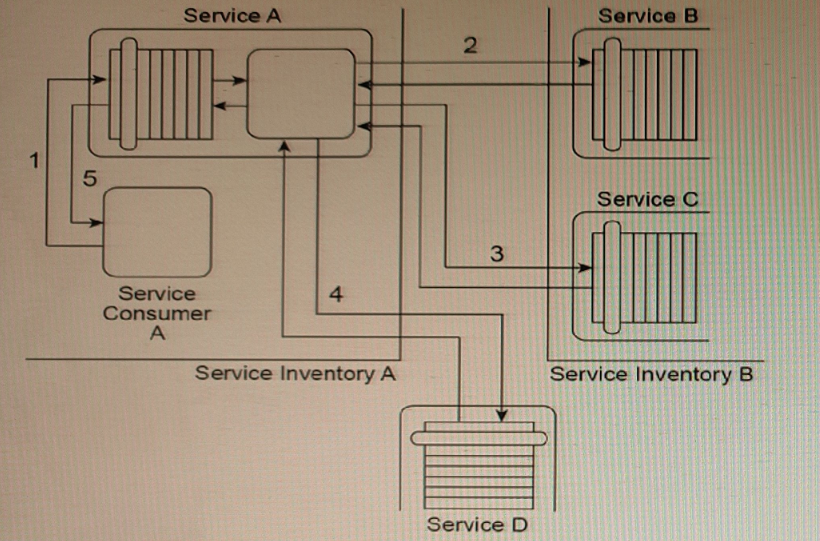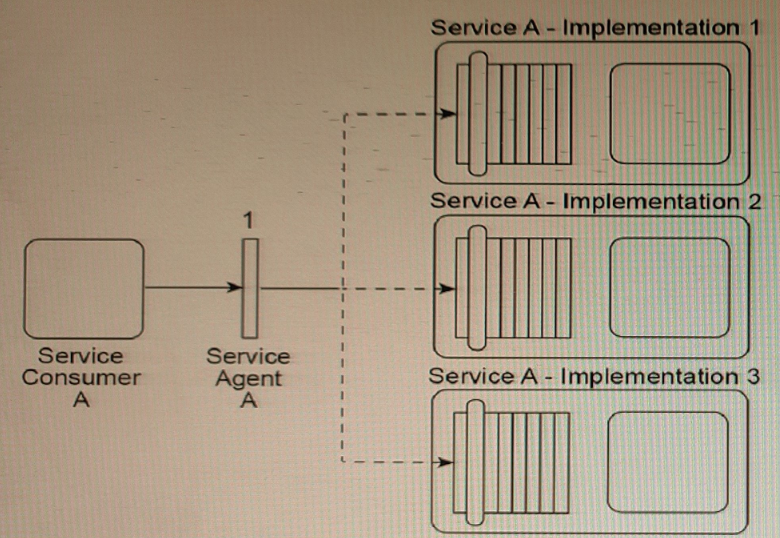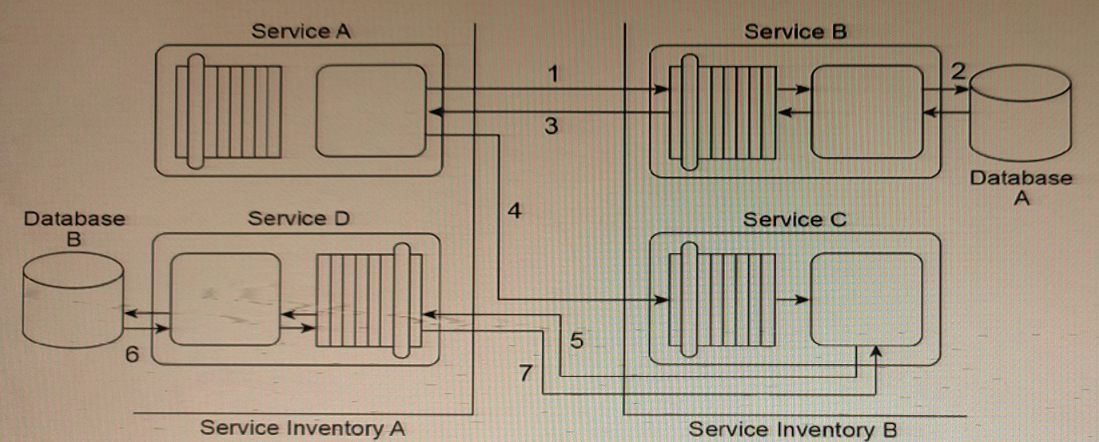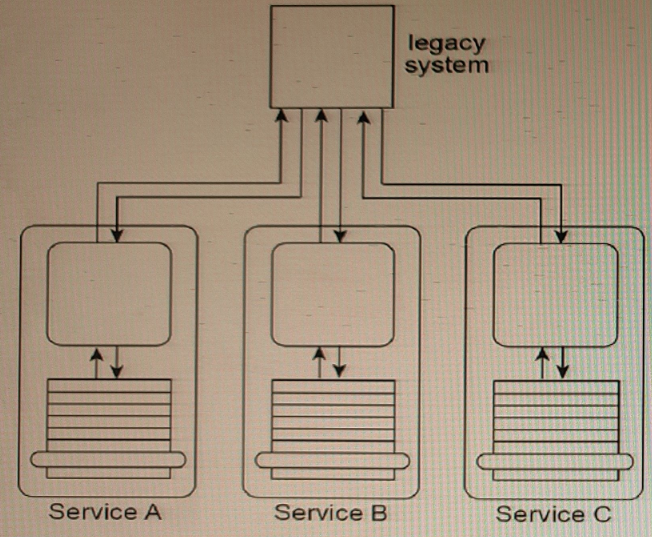Arcitura Education S90.08B Exam Questions
- Topic 1: Fundamental SOA, Services & Microservices: The Arcitura Education SOA Certified Professional Gen 2 exam verifies SOA Architects' grasp of SOA and microservice fundamentals. It covers drivers, goals, SOA benefits, and introduces essential service concepts, technologies, and design paradigms.
- Topic 2: Microservice Technology Concepts: This topic evaluates the knowledge of SOA Architects about service implementation methods, message exchange, and activities. It covers XML, JSON, HTTP, REST, and web service contracts. Additionally, the topic focuses on IaaS, PaaS, SaaS, and vertical and horizontal scaling.
- Topic 3: Design & Architecture with SOA, Services & Microservices: The SOA Design & Architecture Lab with Services & Microservices exam focuses on designing skills, and comparing service-oriented and silo-based designs. It covers service capabilities, composition, microservice contexts, and the eight design principles of service-orientation.
- Topic 4: Advanced SOA Design & Architecture with Services & Microservices: This topic of the S90.08B test focuses on advanced architecture, contrasting SOA with traditional models. It assesses knowledge of composition, centralization, contract management, and façades, including microservice deployments and containerization.
- Topic 5: SOA Design & Architecture Lab with Services & Microservices: The practical lab tests the ability of SOA architects to apply SOA and microservices in real-world scenarios. Exercises include case studies, platform upgrades, REST service remodeling, and API gateway design.
Free Arcitura Education S90.08B Exam Actual Questions
Note: Premium Questions for S90.08B were last updated On Jun. 23, 2025 (see below)
Refer to Exhibit.

Service Consumer A and Service A reside in Service Inventory
The Asynchronous Queuing pattern is applied to position a messaging queue between Service A, Service B, Service C, Service D, and Service Consumer A. This ensures that messages can be passed between these services without having to be in a stateful mode.
The Data Model Transformation and Protocol Bridging patterns are applied to enable communication between Service A and Service B, Service A and Service C, and Service A and Service D, despite their different data models and transport protocols.
The Redundant Implementation pattern is applied to bring a copy of Service D in-house to ensure that it can be accessed locally and reduce the unpredictability of its performance.
The Legacy Wrapper pattern is applied to wrap Service D with a standardized service contract that complies with the design standards used in Service Inventory B. This is useful for service consumers who want to use Service D but do not want to change their existing applications or service contracts.
Overall, this approach provides a comprehensive solution that addresses the issues with Service A, Service B, Service C, and Service D, while maintaining compliance with the Service Abstraction principle.
Refer to Exhibit.

Service Consumer A sends a message to Service
By separating the individual implementations of Service A onto different physical servers, they can be isolated from each other and from other clients and applications in the IT enterprise, which can help improve performance. Additionally, using the Service Data Replication pattern to give each implementation of Service A its own copy of the data it requires from the shared database can help reduce the load on the shared database and improve performance. This can be especially important when a new service capability is added that requires access to the shared database, as it can help ensure that the performance of Service A is not impacted by the additional demands placed on the shared database.
Refer to Exhibit.

Service A sends a message to Service B (1). After Service B writes the message contents to Database A (2), it issues a response message back to Service A (3). Service A then sends a message to Service C (4). Upon receiving this message, Service C sends a message to Service D (5), which then writes the message contents to Database B (6) and issues a response message back to Service C (7).
Service A and Service D are located in Service Inventory
This solution addresses the two main challenges in the service composition architecture: the different XML schema used by services in Service Inventory A and Service Inventory B, and the incompatible data formats of the two databases.
By applying the Data Model Transformation pattern, data model transformation logic can be inserted to map the invoice-related data between the different XML schemas used by the services in Service Inventory A and Service Inventory B. This can be done at the appropriate points in the message flow: between Service A and Service B, between Service A and Service C, between Service C and Service D, and between the Service D logic and Database B.
By applying the Data Format Transformation pattern, data format transformation logic can be inserted to convert the XML-formatted data used by the services to the CSV format required by Database A, and to convert the proprietary XML schema used by Database B to the XML schema used by the services. This can be done between the Service B logic and Database A.
The Protocol Bridging pattern is not necessary in this case because all services are already communicating using the same protocol (presumably HTTP or a similar protocol).
Refer to Exhibit.

Service Consumer A sends a message to Service A (1), which then forwards the message to Service B (2). Service B forwards the message to Service C (3), which finally forwards the message to Service D (4). However, Services A, B and C each contain logic that reads the contents of the message to determine what intermediate processing to perform and which service to forward the message to. As a result, what is shown in the diagram is only one of several possible runtime scenarios.
Currently, this service composition architecture is performing adequately, despite the number of services that can be involved in the transmission of one message. However, you are told that new logic is being added to Service A that will require it to compose one other service to retrieve new data at runtime that Service A will need access to in order to determine where to forward the message to. The involvement of the additional service will make the service composition too large and slow.
What steps can be taken to improve the service composition architecture while still accommodating the new requirements and avoiding an increase in the amount of service composition members?
This solution addresses the issue of the service composition becoming too large and slow by introducing a new Routing service that is invoked by messages read from a messaging queue. This allows Service A and Service C to determine where to forward messages to at runtime without the need for additional services in the composition. The Service Loose Coupling principle is applied to ensure that the new Routing service remains decoupled from other services so that it can perform its routing functions independently from service contract invocation.
Refer to Exhibit.

Service A, Service B, and Service C are entity services, each designed to access the same shared legacy system. Service A manages order entities, Service B manages invoice entities, and Service C manages customer entities. Service A, Service B, and Service C are REST services and are frequently reused by different service compositions. The legacy system uses a proprietary file format that Services A, B, and C need to convert to and from.
You are told that compositions involving Service A, Service B, and Service C are unnecessarily complicated due to the fact that order, invoice, and customer entitles are all related to each other. For example, an order has a customer, an invoice has an order, and so on. This results In calls to multiple services to reconstruct a complete order document. You are asked to architect a solution that will simplify the composition logic by minimizing the number of services required to support simple business functions like order management or bill payment. Additionally, you are asked to reduce the amount of redundant data transformation logic that is found in Services A, B, and C.
How will you accomplish these goals?
The Lightweight Endpoint pattern can be applied to establish lightweight capabilities that can return related entity data directly to service consumers, simplifying the composition logic by minimizing the number of services required to support simple business functions like order management or bill payment. This approach provides a standardized and simplified interface for the legacy system, reducing the complexity of the integration process with the entity services, and enabling them to focus on their core functionality.
- Select Question Types you want
- Set your Desired Pass Percentage
- Allocate Time (Hours : Minutes)
- Create Multiple Practice tests with Limited Questions
- Customer Support
Lenita
9 days agoLorrie
14 days agoAdelle
22 days agoGianna
2 months agoSophia
2 months agoBenton
2 months agoIsadora
3 months agoPage
3 months agoIsidra
3 months agoMinna
4 months agoLeanora
4 months agoRashad
4 months agoBarabara
5 months agoHerminia
5 months agoRoslyn
5 months agoLashandra
5 months agoBobbie
6 months agoAlease
6 months agoMargo
6 months agoDarrin
7 months agoDianne
7 months agoJulieta
7 months agoAnglea
7 months agoAlethea
7 months agoLinn
8 months agoErinn
8 months agoOretha
8 months agoMagda
8 months agoKeneth
8 months agoCeola
8 months agoAugustine
9 months agoLuis
9 months agoLashon
9 months agoKattie
9 months agoJudy
9 months agoBeatriz
10 months agoMoira
10 months agoDomitila
1 years agoDetra
1 years agoValentin
1 years ago